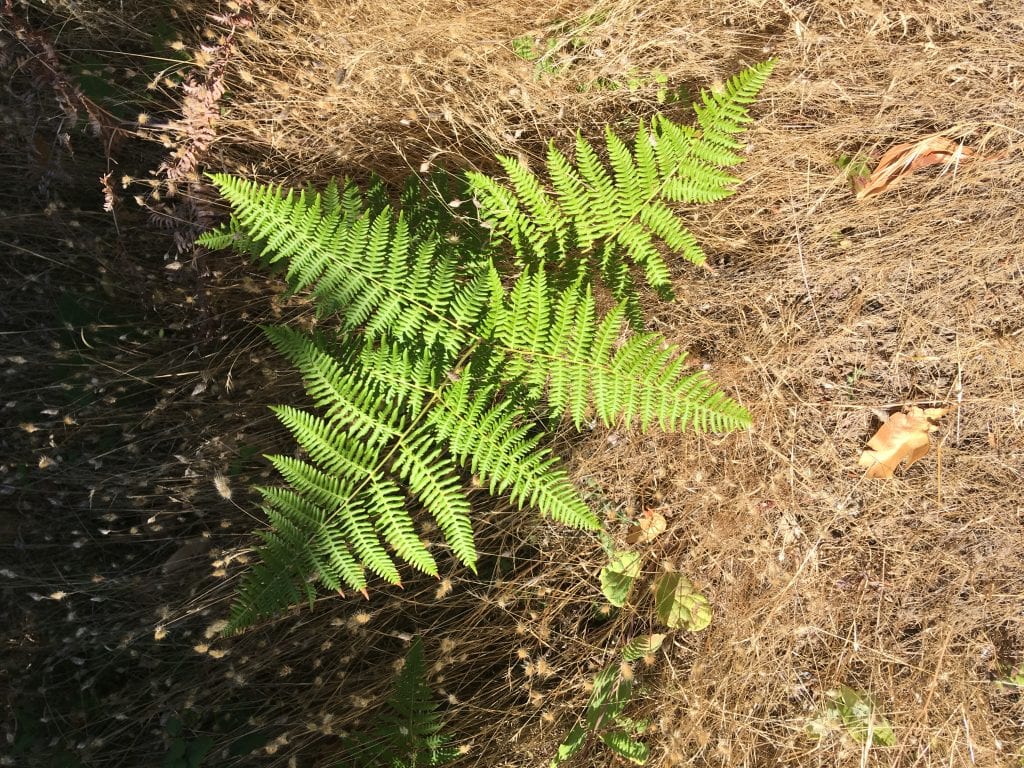By Yasmine Mohammad and Charlotte Estey
As we write this post we are experiencing some post-Redfish withdrawals and reminiscing on all the magical wonderfulness that was Redfish. When we think about our Redfish community, including every person and every being we met along the way, one characteristic stands out in particular – that of resilience. Resilience can be understood as a system’s ability to adapt to or recover from disturbances or stressors. Our immediate community demonstrated resilience when we persevered after being faced with various physical and emotional challenges. Other resilient communities we met with included those of the Bracken ferns and Garry oak camas meadows, which, despite undergoing over a century of colonial disruption, still persist today. What is it about our Redfish community, the Bracken fern, and the Garry oak ecosystems that make them resilient?
To begin, our Redfish community was resilient because it was made up of a network of diverse individuals offering different strengths and taking on a variety of roles, while allowing for some overlap of niches. When a stressor hit, everyone could help in a different capacity, allowing our community to continue on without falling apart. We were also able to adapt to novel or challenging conditions, by taking on slightly different roles and behaviours. If a stressor hit just one individual, someone else could take on their role, allowing that individual to get the rest they needed. It also helped that we all shared a common goal – to learn about and bring about social-ecological change – that helped to keep us connected and care for each other.
After one of the many brilliant plant walk sessions with instructor Brenda Beckwith, our perception of community shifted when Brenda taught us about the large fern genus Bracken, Pteridium. Bracken ferns are commonly viewed as invasive plants, because of the mass amounts of spaces they occupy, and their resilient nature. The taking up of space begins with the large network of the rhizome system beneath the soil. The roots intertwine and connect underground, giving rise to new buds capable of forming individual fronds, the leaflike part of the plant. We can see parallels between this and our Redfish community, where we support each other and work together to spread our knowledge and leadership to each of our individual home communities.
Before a community can radiate outwards, however, it must take care of its own health and needs. The Bracken fern portrays this in the range of toxic chemicals they hold within their tissues, which prevents them from being preyed upon or decaying. When actions are taken to get rid of Bracken fern, such as burning, signals are sent to through the shoots to the deeper growing roots, triggering a growth signal for when the surficial fronds are destroyed. This allows the new fronds to grow and continue living in the space they initially occupied. Not unlike the Bracken fern, resilience within a community arises from the strong and sturdy foundation that continues to build as the roots extend and connect within the soil, retaining the nutrients, water, and knowledge required to continue growing.
 A Bracken fern on Sucia Island.
A Bracken fern on Sucia Island.
Our last story of resilience takes place on Sucia Island where we visited Ewing Cove, sat on the coastal bluff under the hot sun, and learned that just over a century ago, this place was perhaps a highly productive Garry oak meadow filled mostly with purple camas and snowberry. The Camassia quamash, or purple camas, is considered a cultural keystone species by many Coast Salish peoples, who, prior to colonization, relied on camas bulbs as a dietary staple.
The Coast Salish peoples cared for these ecosystems and ensured their sustained productivity through management strategies that involved providing small disturbances: cultural prescribed burning and traditional digging of camas bulbs. Prescribed burning helped keep out weedy plants, while providing charcoal for the soil, and digging helped loosen the soil that enabled the bulbs to grow larger. It became clear that ‘camas and people go hand in hand,’ and that these ecosystems fair best when maintained by those who know how to properly care for them. Colonization has led to the elimination of these important cultural practices for camas meadows through development and neglect and bulbs found today are much smaller now than they used to be.
Camas fields on Mount Tolmie, Victoria, May 2018.
Yet, the camas persists, and we can find hope in its resilience. Camas is so resilient that it was considered by some European settlers to be a noxious weed – it underwent so much disturbance yet kept growing back. Part of what makes camas so resilient is that it has contractile roots that enable the camas to move when conditions are unfavourable. During seasonal drought, the roots will shrink vertically and pull the camas deeper into the soil to protect it from sun and heat. Maybe another reason camas is so resilient is that it has learned to adapt to and persevere with disturbance – just like our Redfish community ☺.


Pictured: Two camas bulbs, one recently dug (and soon to be replanted) and the other, cooked, dried, and ready to eat. We had the privilege of tasting camas bulbs, something that not every Coast Salish person is able to do today. Photo by Shayla Brewer.
